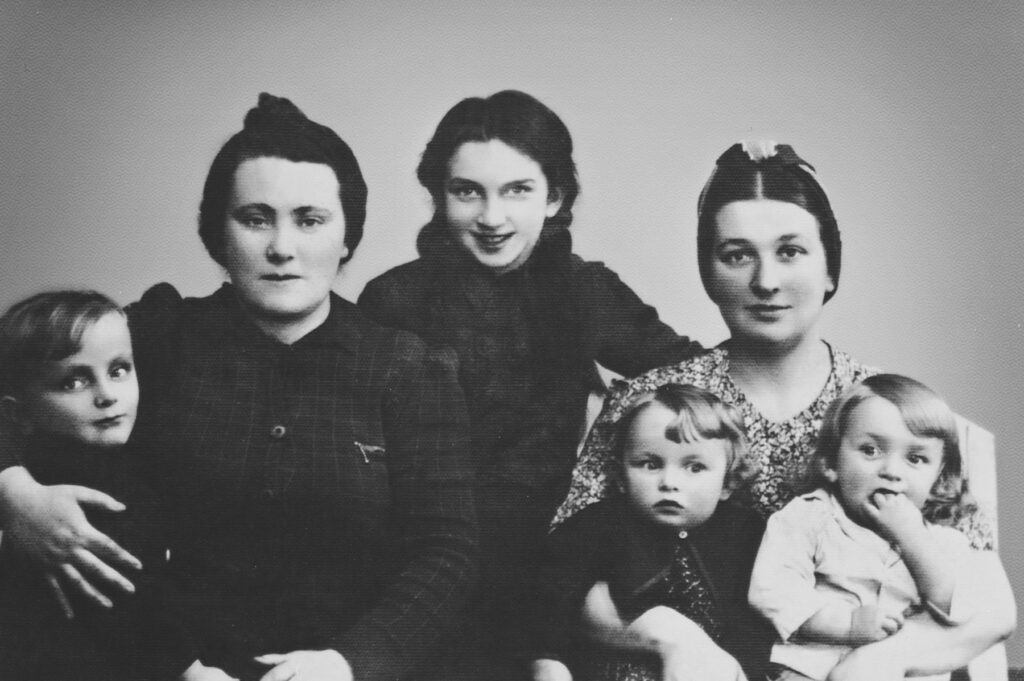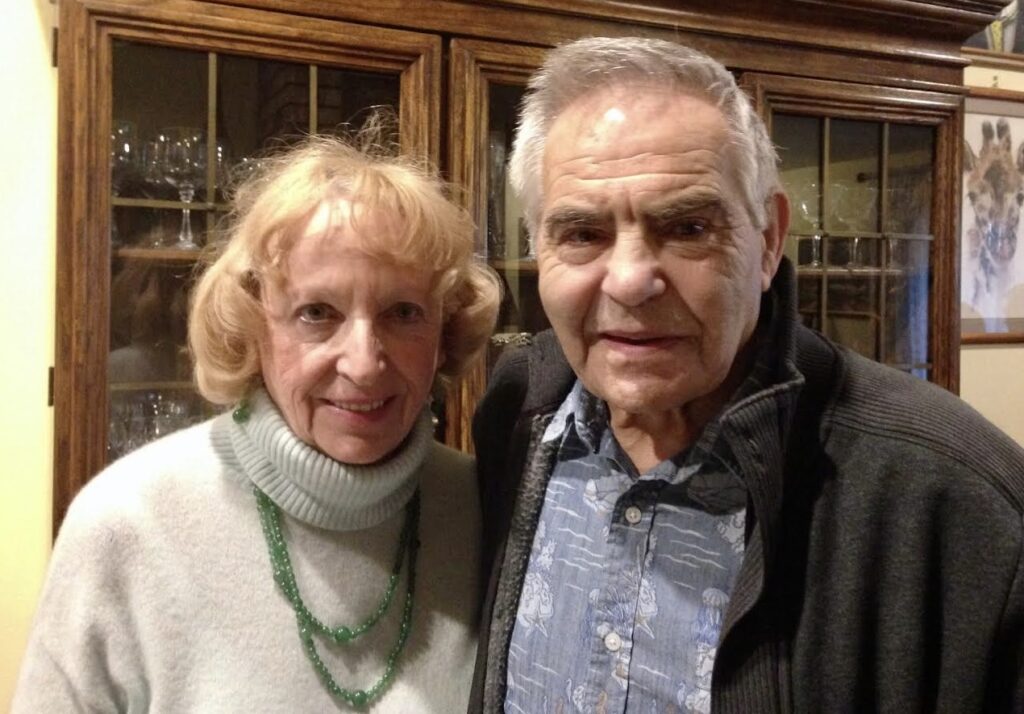In her earliest memory of life in Poland, Ida Paluch was three years old when she, her twin brother, Adam, and older sister, Gienia, witnessed a woman, mad with fear, jump from a building to her death to escape forced relocation and inevitable murder by the Nazis.
The woman was their mother, Esther Paluch.
Ida was soon taken in by Wilhem and Jozefa Maj, a Polish Catholic couple who put themselves in grave danger by passing her off as their own child. Ida was baptized as Irena Maj and given a Christian birth certificate.
By the time Germany surrendered three years later, in 1945, Ida had only vague memories of her earlier life and no knowledge of her Jewish origin — the result, undoubtedly, of her youth, early trauma, and the secrecy to which her loving adoptive parents had sworn themselves.
Freed from captivity in Russia, her father, Leon Paluch, returned for Ida. Then six years old, she reclaimed the Paluch family name and slowly adjusted to the shock of her Jewish identity. The fates of Gienia and Adam, however, like those of obscenely vast numbers of Polish Jews, were unknown.
In 1957, Ida, her father, and stepmother started new lives in Israel. A search there for her lost siblings proved fruitless. Six years later, Ida married, gave birth to a daughter, and the three moved to the U.S. on an immigration visa, with help from her aunt in Chicago.
Soon after their arrival, Ida’s aunt surprised her with something that took her breath away: a photograph of Ida’s mother holding Ida and her twin brother, Adam; their older sister, Geinia, smiling brightly in back. Seeing their faces as if for the first time, Ida felt overwhelmed by sadness, curiosity, and a resurgence of hope.

She extended her search for her siblings to the Red Cross, Social Security Administration, conferences for Hidden Child Survivors, and various agencies in Israel and Poland.
Each failed inquiry brought her closer to despair. Millions had been killed in the war. The world was too vast. The silence too long.
Then one day, in 1995, Ida received a letter from a friend.
It enclosed an article about a Holocaust survivor orphaned in Warsaw who didn’t know his real identity. Ida compared the accompanying photo of the man to those she had of her father and paternal grandfather.
The resemblance was undeniable. His story and timeframe matched hers.
After 53 years, Ida had found her twin.
With help from the reporter who interviewed Adam in Warsaw, Ida and Adam spoke to each other for the first time. Soon they were talking twice a day. Within a few months, Ida flew to Poland. Their emotional reunion was covered by Polish and Israeli media and, upon Adam’s subsequent visit to the U.S., a front-page story in the Chicago Tribune.
I recently sat with Ida Paluch Kersz, 83, at her kitchen table in Skokie, Illinois, once home to the largest population of Holocaust survivors in the U.S. “I didn’t leave a stone unturned looking for our sister,” she told me. “I believe that if she were alive, she would’ve come back. I have no answer for these things. It’s very hard.”
But she’d found Adam. When I asked what she considers her most pivotal ask in that momentous chapter of her life, she answered:
“I met with my congressman in his office and asked him to write a letter to Immigration, to get my brother a temporary visa. But he said he wouldn’t write the letter because Adam’s birth certificate had a different last name [that of his foster parents], and that without proof that he was my brother getting a visa would be ‘nearly impossible.’ I was very upset and started to cry.”
Ida and Adam’s dream of a shared life in the U.S. might have ended at that moment. But someone else heard her ask.
“The congressman’s secretary, who was listening nearby, was very moved by my story. She introduced herself as Mrs. Stein and asked to see the photos I brought. She, too, saw the resemblance between Adam and our father and grandfather, and told me to send my story directly to Immigration along with copies of the photos.”
Ida followed the secretary’s advice. Just two weeks later, she received a letter from the U.S. Citizenship and Immigration Services. The agency accepted her claims and permitted her to sponsor her brother in the U.S.
Though nothing could make up for their five decades apart, Ida and Adam lived together in Skokie from 1995 until his death in 2022.
“So many people had told me to give up hope of finding my brother,” Ida said. “But I kept looking and kept asking. I could not let go.”

“Optimism is the belief that the world is changing for the better; hope is the belief that, together, we can make the world better … It needs no courage to be an optimist, but it takes a great deal of courage to hope.”
– Rabbi Jonathan Sacks
Ida Paluch Kersz is the author of Unveiled Memories: Twins Reunited After the Holocaust. She can be reached through the Illinois Holocaust Museum. Paul Quinn is the author of a book-in-progress, The Big Ask, in which this story appears.

Paul, what an amazing tale. Her journey and that of her brothers are things one can’t even fathom. Great job.
I sit here with tears and a smile. This is beautiful and indeed brings Hope.
Thank you to Ida and Adam for living to tell this story and for Paul who is sharing this with us.
Beautiful story Paul. It brought tears to me eyes. So many were lost in the Holocaust, including members of my family. Ida & Adam were blessed.